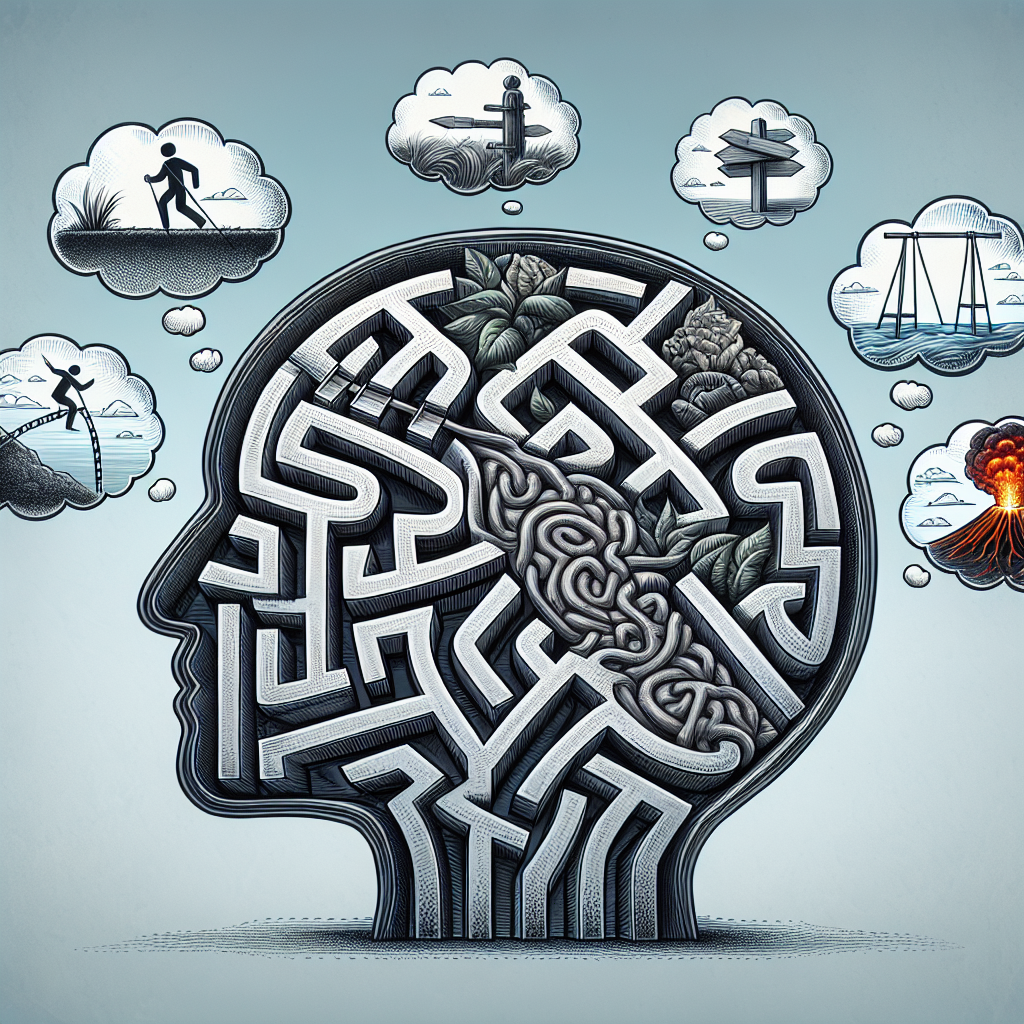Introduction
Picture this: You’re standing at the precipice of a decision that could change the course of your life. Should you invest in that new startup? Quit your stable job to pursue your passion? Understanding the psychology of risk and how perception influences decision-making is crucial in today’s uncertain world. The stakes are higher than ever, and our decisions shape our futures. This article breaks down the intricate relationship between risk perception and decision-making, providing insights that are both applicable and thought-provoking.
Understanding Risk and Perception
What is Risk?
Before delving into how perception influences decision-making, we must first understand what risk actually is. At its core, risk refers to the possibility of loss or harm resulting from a decision or action. This can be quantified in many ways—financially, emotionally, or even physically. Recognizing the multifaceted nature of risk is essential for understanding how we perceive and respond to it.
The Role of Perception
Perception is the lens through which we view the world, and it profoundly shapes our understanding of risk. Cognitive biases, past experiences, cultural background, and emotional states all contribute to how we perceive risk. For instance, a seasoned investor might perceive a volatile market differently than a novice investor, who may feel overwhelmed and fearful.
Cognitive Biases in Risk Perception
Numerous cognitive biases can distort our perception of risk, leading to suboptimal decision-making. Some key biases include:
-
Loss Aversion: We tend to prefer avoiding losses over acquiring equivalent gains. This bias affects our willingness to take risks.
-
Overconfidence Bias: Many of us overestimate our knowledge and ability, leading to overly optimistic risk assessments.
- Availability Heuristic: Events that are easily recalled, often due to their sensational nature, disproportionately influence our perception of risk.
Chart: Common Cognitive Biases Related to Risk Perception
| Cognitive Bias | Description | Example |
|---|---|---|
| Loss Aversion | Discomfort from losing more than joy from gaining | Hesitating to invest in stock due to fear of loss |
| Overconfidence | Overestimation of one’s knowledge | Believing you can’t fail in a new business venture |
| Availability Heuristic | Relying on easily recalled information | Fearing plane crashes more than car accidents |
Case Studies in Risk Perception and Decision-Making
Case Study: The Financial Crisis of 2008
The 2008 financial crisis serves as a pivotal example of how misperception of risk can lead to catastrophic results. Prior to the crisis, many investors were overly confident in the housing market’s stability, leading them to overlook fundamental economic indicators. This neglect of risk perception was rooted in a generalized belief that housing prices could only increase.
Analysis: This case demonstrates how overconfidence and herd mentality can skew risk assessment, ultimately leading to poor decision-making.
Case Study: Medical Decision-Making
In healthcare, patients’ perceptions of risk can significantly affect treatment decisions. For instance, patients may refuse life-saving surgeries due to the fear of complications, even when statistical evidence shows a high success rate.
Analysis: Here, the emotional response to perceived risk directly impacts health outcomes. Educating patients on actual risks versus perceived risks can lead to better, more informed choices.
The Psychology of Risk: How Perception Influences Decision-Making
The Spectrum of Risk Perception
Risk perception exists on a spectrum. At one end lies an acute awareness of risks, while on the other lies a desensitization to danger. Factors influencing this spectrum include media coverage, personal experiences, and societal norms.
Emotional Decision-Making
Emotions play a powerful role in risk perception. Fear can paralyze decision-making, while excitement may lead to reckless choices. Understanding these emotional drivers can aid individuals in navigating their decisions more effectively.
Real-World Application: Behavioral Economics
Behavioral economics combines psychology and economic theory to explain how people make decisions under risk. It suggests that our choices are often less rational than we think. Understanding principles such as "nudge theory" can lead to more effective decision-making frameworks.
Strategies for Better Decision-Making
Risk Assessment Frameworks
Employing structured risk assessment frameworks can help mitigate cognitive biases. These frameworks include:
- SWOT Analysis: Identifying Strengths, Weaknesses, Opportunities, and Threats can provide a well-rounded view of risks.
- Cost-Benefit Analysis: Weighting the potential costs against the benefits can clarify decision-making points.
Cultivating a Risk-Aware Culture
In organizations, fostering a culture of risk awareness can lead to informed decisions. This includes encouraging open discussions about risks and removing the stigma associated with making mistakes.
Using Technology to Inform Decisions
Technological tools can help visualize risks and make data-driven decisions. Software that analyzes trends can provide insights that lead to better risk assessment.
Conclusion
The psychology of risk is a powerful force influencing our decisions. By understanding how perception impacts our judgments, we can cultivate better decision-making practices. Whether in finance, healthcare, or personal choices, recognizing and mitigating biases can make a significant difference. Embrace the complexity of risk and equip yourself with the knowledge to make informed decisions, turning challenges into opportunities.
FAQs
1. What is risk perception?
Risk perception refers to how individuals interpret and react to the risks they face. It is influenced by cognitive biases, past experiences, and emotional responses.
2. How can I improve my decision-making regarding risks?
Improving decision-making can be achieved by using structured frameworks like SWOT analysis or cost-benefit analysis, as well as being aware of cognitive biases.
3. Why do people often misjudge risks?
People misjudge risks due to cognitive biases such as loss aversion, overconfidence, and the availability heuristic, which distort their perception.
4. Can risk perception be changed?
Yes, risk perception can be altered through education, experience, and by fostering a culture of open dialogue about risks.
5. What role does emotion play in risk perception?
Emotions can significantly influence our perception of risk, often leading to irrational decision-making based on fear or excitement.
By expanding our understanding of the psychology of risk and how perception influences decision-making, we can move toward a more calculated and aware approach to life’s challenges. Whether in business, healthcare, or personal choices, being informed is key.

